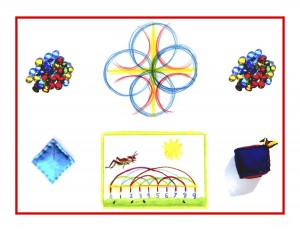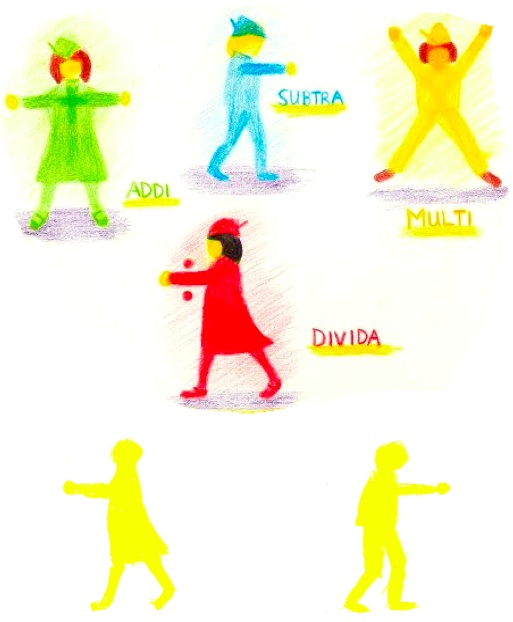Day 117
For one year, 365 days, this blog will address the Common Core Standards from the perspective of creating an alternate, ambient learning environment for math. Ambient is defined as “existing or present on all sides, an all-encompassing atmosphere.” And ambient music is defined as: “Quiet and relaxing with melodies that repeat many times.Why ambient? A math teaching style that’s whole and all encompassing, with themes that repeat many times through the years, is most likely to be effective and successful.
Stories and art are at the heart of Waldorf education. Stories are found throughout the curriculum, from fairy tales in Grade 1 to the biographical and historical stories in the upper grades. A rhythm is employed when telling a story and then using it for the purpose of teaching a new concept or idea.
The new concept is cloaked in the lovely garment of the story, rather than being presented as bare fact. The story is told on day 1 and then retold by the child(ren) on day 2. The story is remembered in every detail, indicating how deeply it lives within. And as such, it very effectively communicates what is being taught through it.
On day 2, after the story is retold by the child(ren), it’s related to the lesson. For instance, a fairy tale featuring a King might be told for teaching the letter K. After the story is retold, the teacher could strike a pose as the King stepping forward and raising his arm in greeting to his subjects. When the child(ren) imitate(s) the King’s pose while saying the greeting, the feeling of the letter K is experienced as bodily movement.
Standing with a piece of blank, white paper taped to the board or a wall, the teacher uses the broad end of a yellow crayon to lightly block in the letter K, large on the page. It can then be dressed and crowned as the King! And the letter K can be drawn large, on the facing page.
When drawing figures (like the 4 Processes characters shown below) block the figures in yellow then add details: clothing, hair, shoes, etc. Hands can simply be round balls as shown, and faces can be left blank (this allows the flexibility of being able to see the faces through lively, imaginative pictures). Notice how body language conveys the very different character of each one.
Consider that guiding the child(ren) in this way rather than leaving them free to do their own artwork is providing necessary instruction, rather than hindering freedom of expression. And always remember that knowledge ensues in an environment dedicated to imaginative, creative knowing, where student and teacher alike surrender to the ensuing of that knowledge as a worthy goal. Tune in tomorrow for Addi’s, Subtra’s, Multi’s, and Divida’s special stories!













